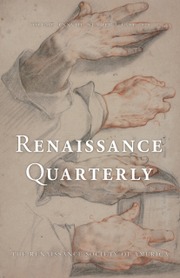Carlo Taviani’s book, The Making of the Modern Corporation, examines the Casa di San Giorgio’s organizational and operational structure. Taviani aims to explore its potential replicability in other early modern corporations. He dissects San Giorgio’s operational framework, territorial reach, relationship with Genoa, and its inspiration for future corporate institutions.
Taviani’s argument primarily focuses on the history and evolution of business institutions. The central thesis of the book is that the reputational discourses surrounding these institutions play a crucial role in their development. Specifically, he argues San Giorgio emerged and evolved in response to contemporary commentaries about it as an institution. Later, other institutions modeled themselves after San Giorgio and responded to similar criticisms and commentaries. Taviani draws parallels between San Giorgio and other notable companies, such as the Dutch East India Company, the Bank of England, and the Mississippi Company. The argument is presented with clarity and persuasiveness, and the author provides a comprehensive historiographical outline that includes a detailed list of past work on San Giorgio and approaches to the institutional history of corporations. The historiographical outline precisely contextualizes the work within the broader scholarly conversation and efficiently grounds the reader in the subject.
The book’s first part focuses on the foundation and operation of the institution. Genoa’s public debt climbed during the late fourteenth and early fifteenth centuries to help finance its conflicts with Venice for commercial supremacy. The original institution operated in ways analogous to a modern bond bank. Investors would purchase loca, parts of a set of debts, on which they earned a pagae interest payment. Both financial instruments were obtainable via interactions with San Giorgio or on the secondary market. Over time, it introduced conventional banking services to compensate for liquidity shortfalls. Taviani’s descriptions of the institution’s function and its ultimate success in helping Genoa manage its public debt are well-detailed and documented.
The second part focuses on how San Giorgio managed the territorial dominion it acquired. Taviani thoroughly describes how the bank obtained its territorial domain and emphasizes particular efficiencies of its approach to ruling. However, details on how these territories were more efficiently managed than those within Genoese jurisdiction still need to be included. Exploring how corporate governance was more effective would have benefited the book’s claims. It is easier to advance the notion that San Giorgio inspired the foundation of later corporations with a comprehensive account of its outcomes or how it achieved them.
The book analyzes the political tensions between San Giorgio and the Genoese Commune in its third part. This section highlights criticisms of the institution, emphasizing those of Niccolò Machiavelli. It does not highlight tensions as it aims to achieve; instead, it summarizes criticisms. These criticisms are the basis for the fourth and final section. Taviani shows how the Dutch East India Company, the Bank of England, and John Law’s Mississippi Company modeled themselves after San Giorgio. The common thread between the three companies is reference to Machiavelli’s critique of the institution among the founders of these later corporations.
Taviani is undoubtedly successful in offering a history of San Giorgio that no one has done before. As his historiographical survey highlights, it is an institution frequently mentioned without a detailed exploration of its inner workings. This book provides a thorough analysis that fills this historiographical gap. However, it needs to address its broader scholarly goals more effectively. The book offers fascinating highlights of San Giorgio’s history and legacy but requires more consistent depth in its exploration, akin to the level of detail provided in the first section. We have a general overview of the institution’s territorial control but no exploration of its finer works. We have an outline of the tension between San Giorgio and its founding commune, but we need more of a sense of how it played out. Finally, we have a good outline of institutions that San Giorgio inspired, but all drawn from a literary association and without a finer exploration of the organizational or operational carryover between institutions. The result is an institutional history that only meets some of its stated analytical goals but still succeeds in filling a critical scholarly gap while motivating future research.



